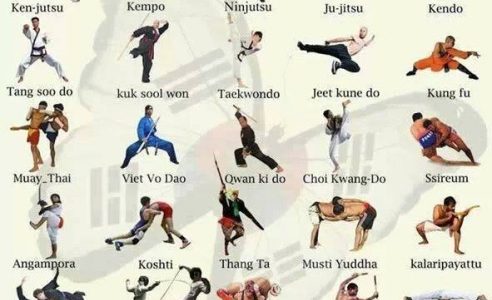Unraveling The Enigma Of Numerous Fighting Style Self-Controls: An Overview To Karate, Taekwondo, And Much More
Unraveling The Enigma Of Numerous Fighting Style Self-Controls: An Overview To Karate, Taekwondo, And Much More
Blog Article
Article By-Faber Francis
Are you tired of feeling bewildered by the substantial world of fighting styles? With so many styles to select from, it can be easy to obtain lost in a sea of punches, kicks, and strange names. global martial arts chapter 128 fear not!
This conversation will certainly demystify the various fighting styles designs, taking you on a journey from the powerful strikes of Martial arts to the dynamic kicks of Taekwondo. Get ready to reveal the origins, strategies, and ideologies behind these ancient art forms.
So, tighten your belt and prepare to start an enlightening expedition right into the exciting globe of martial arts.
Beginnings of Martial Arts Styles
The beginnings of fighting styles designs can be mapped back to old human beings and their need for self-defense and battle techniques. Throughout history, various societies developed their own special techniques of combating, each with its very own collection of strategies and ideologies.
In China, as an example, martial arts designs such as Kung Fu and Tai Chi were developed as a means of self-defense and boosting physical and mental well-being.
In Japan, the samurai warriors produced designs like Martial arts and Judo, focusing on self-control, precision, and proficiency of the body.
Likewise, in Korea, Taekwondo emerged as a fighting style highlighting high kicks, quick activities, and mental stamina.
These very early human beings laid the structure for the varied range of martial arts designs that exist today, each with its very own abundant background and social significance.
Strategies and Educating Methods
To understand fighting styles styles, practitioners have to find out numerous techniques and training methods.
Strategies are the details activities and activities used in combat, such as strikes, kicks, tosses, and blocks. Various martial arts designs have their own special set of methods that practitioners should understand with strenuous training.
Training approaches differ depending on the style, but they generally entail a combination of physical fitness, drills, sparring, and types.
Physical fitness is crucial to build strength, adaptability, and endurance. Drills assist practitioners refine their techniques and enhance their speed and accuracy.
Sparring enables professionals to practice their strategies in a controlled, reasonable atmosphere. Kinds, also referred to as kata, are deliberate series of movements that help specialists establish muscle mass memory and emphasis.
Approaches and Concepts
Discovering the approaches and concepts of fighting styles styles can supply you with a deeper understanding of your chosen discipline. Each martial art has its own one-of-a-kind ideology and set of assisting principles that form the way it's exercised.
As an example, Karate stresses technique, regard, and self-constraint. It instructs practitioners to concentrate their minds and bodies, allowing them to protect themselves while maintaining a sense of internal peace.
On try this website , Taekwondo puts a strong emphasis on speed, dexterity, and adaptability. Its concepts are rooted in the tenets of politeness, integrity, determination, self-discipline, and indomitable spirit.
Conclusion
Now that you have actually discovered the beginnings, strategies, and viewpoints of different martial arts designs, you have a much deeper understanding of these ancient techniques.
Envision simply click the following webpage , exercising with unwavering decision and emphasis, breaking through boards with an effective punch.
Their journey showcases the dedication and strength needed to understand a martial art, advising us that with self-control and determination, anything is possible.
